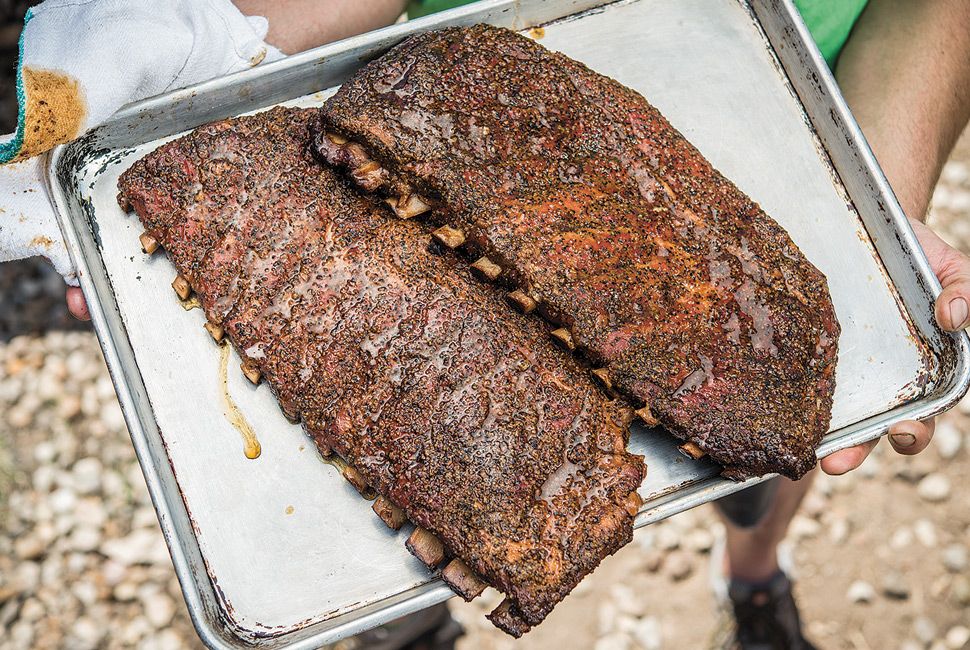Back in the summer of 2012, a few GP editors went to an event called Meatopia on Randall’s Island in New York. It rained like hell that day, and a tornado touched down nearby, but, nevertheless, we walked around and tasted a lot of good meat, including some really good brisket. When Aaron Franklin’s new book, Franklin Barbecue: A Meat-Smoking Manifesto, arrived at our office, we realized on page 126 that he was the guy behind the beef — and he’d been up all night trying to figure out how to get these things cooked. “Brisket can test you”, he writes, “but you just have to persevere… Things can go wrong — hopelessly, horribly wrong — but at the end of the day, there are multiple ways to pull it together.”
And that seems to be Aaron Franklin, proprietor of Franklin Barbecue in Austin, TX, in a nutshell. He’s a no-nonsense, nose-to-the-grindstone kind of guy whose obsession with barbecue started with a New Braunfels Hondo Classic smoker he got for $99. Several handmade smokers and countless briskets later, he finds himself with a “#1 Barbecue in Texas” ranking from Texas Monthly (a veritable ‘cue authority) under his belt and a nomination for a James Beard Award for Best Chef Southwest. We caught up with Franklin to talk about the nomination, the President’s visit and what beer he likes with a tomahawk ribeye.

Q. You’ve got a book coming out this month, a show in the works and you run a notoriously busy restaurant. Dare I ask what else you’re working on?
A. Right now the biggest thing is just working at the restaurant. I’m working on building barbecue pits, of course; that’s a normal thing that always happens. I think the biggest thing we’re working on is getting ready for pop-up dinners we’re doing around the country this summer. We’re doing four cities — Chicago, Los Angeles, San Francisco and Brooklyn — picking locations, building cookers and figuring out all the logistics. Instead of, like, doing a book tour, I just kind of want to do some backyard-style pop-ups. So it will be just real small dinners, but organizing is a kind of an undertaking.
Q. What’s the biggest challenge?
A. We’ve got a lot of moving parts. We’ve got all the locations pretty much figured out, and now it’s the logistics of getting barbecue pits to these places. When you go to Chicago, I mean, there might be some guy who’s like, “Oh, I got a cooker.” Well, they might only fit two or four briskets, or you can’t really cook on it. So we’ll build them ourselves. Beyond getting the barbecue pits in line, we’re figuring out who’s going to receive the meat, where it’s going to go, how it’s going to get there — because we don’t just show up and get meat. I get it from specific farmers.
Q. What hours are you keeping at the restaurant?
A. I’m in and out 24 hours a day. It just really depends. Some days I show up at midnight and I cook overnight, then work through lunch; other days I show up at four or five in the morning, cook ribs with the rib cook and then work through lunch, go work at the welding shop until five or six in the evening, come home. Some days I work at parties that start at seven until late at night. I haven’t really calculated my hours, but it’s probably around 70 to 80 hours a week.
You know, I kind of gave [President Obama] some grief for skipping the line, and at the time, I kind of just felt like he was a normal customer.

